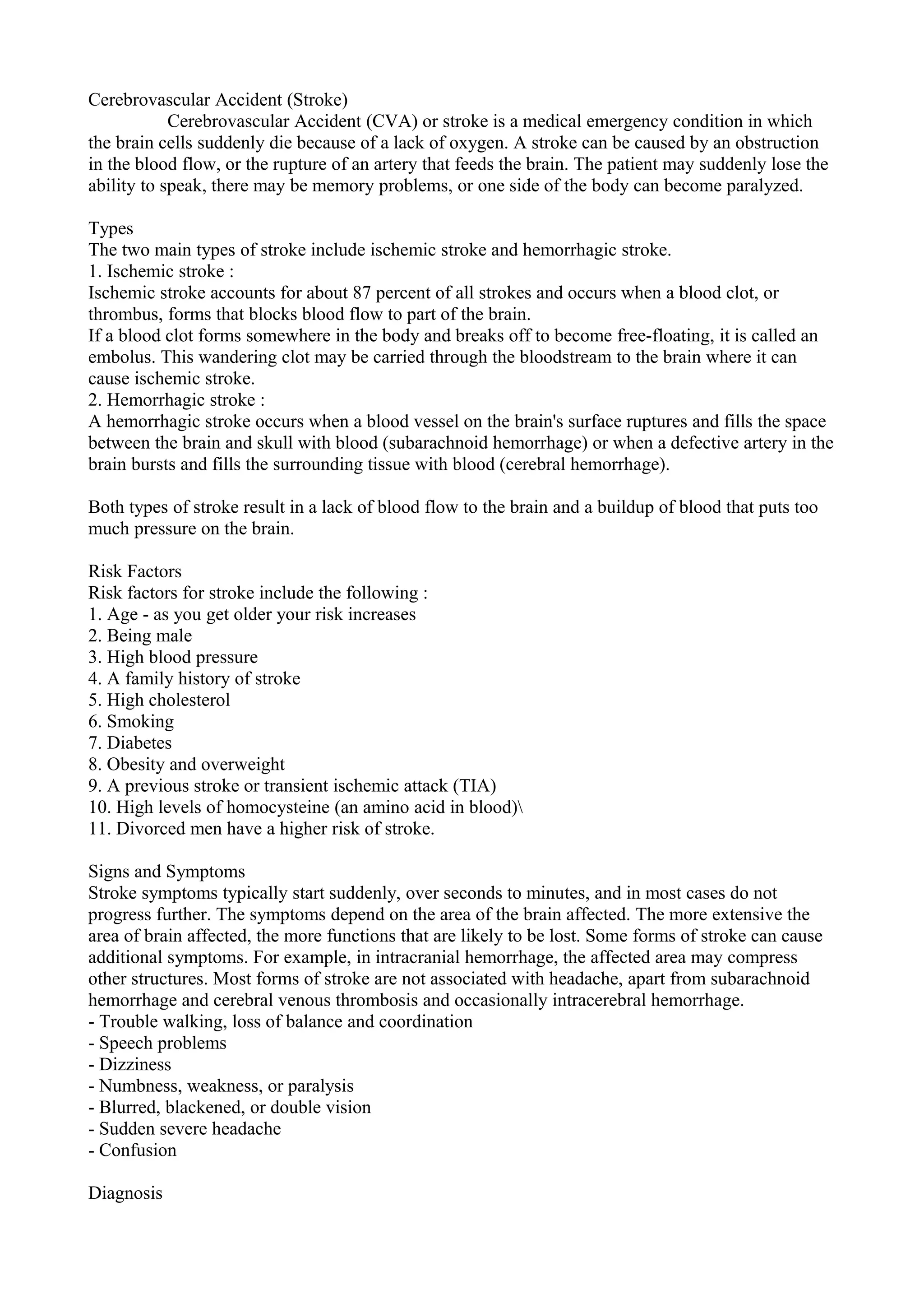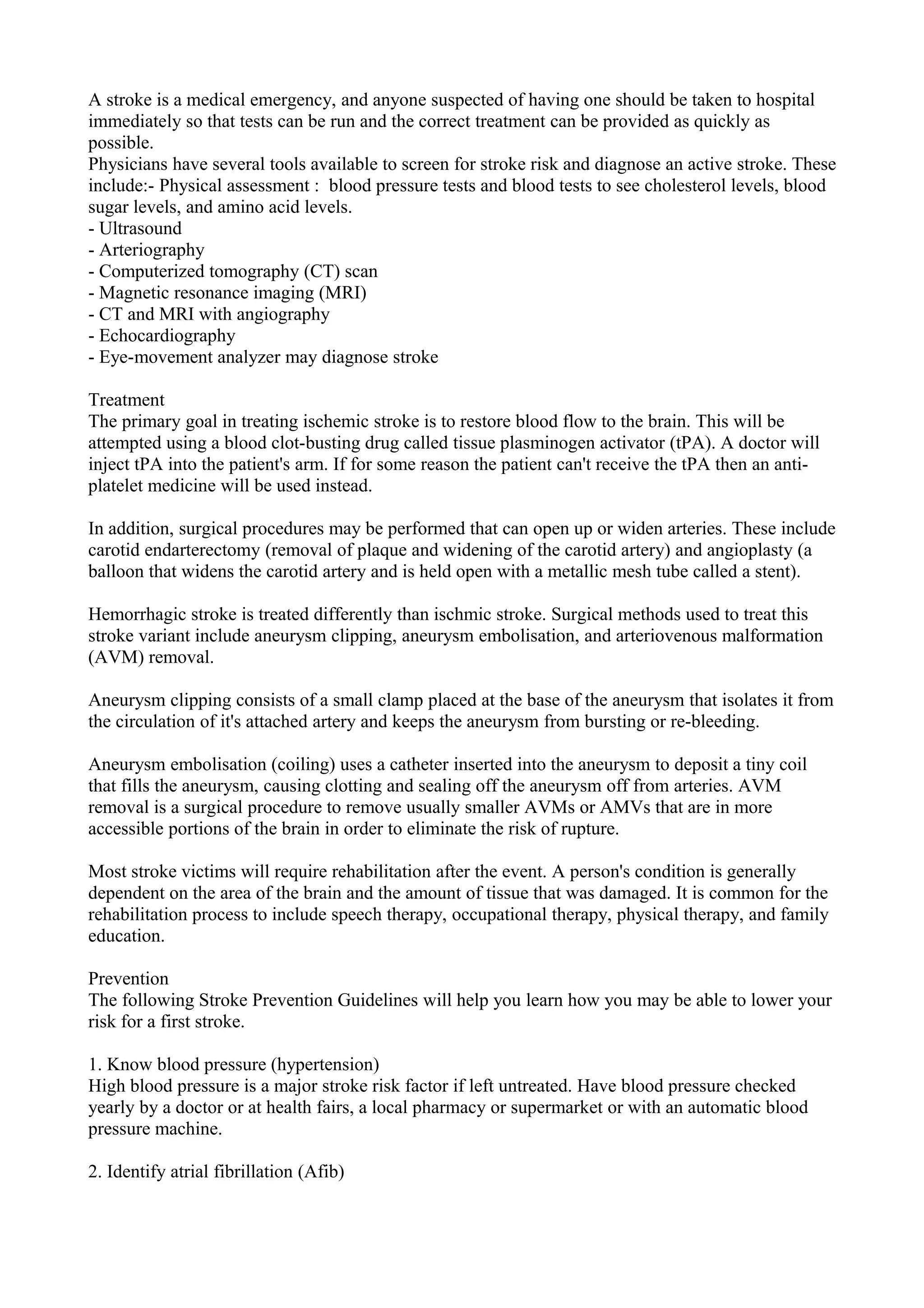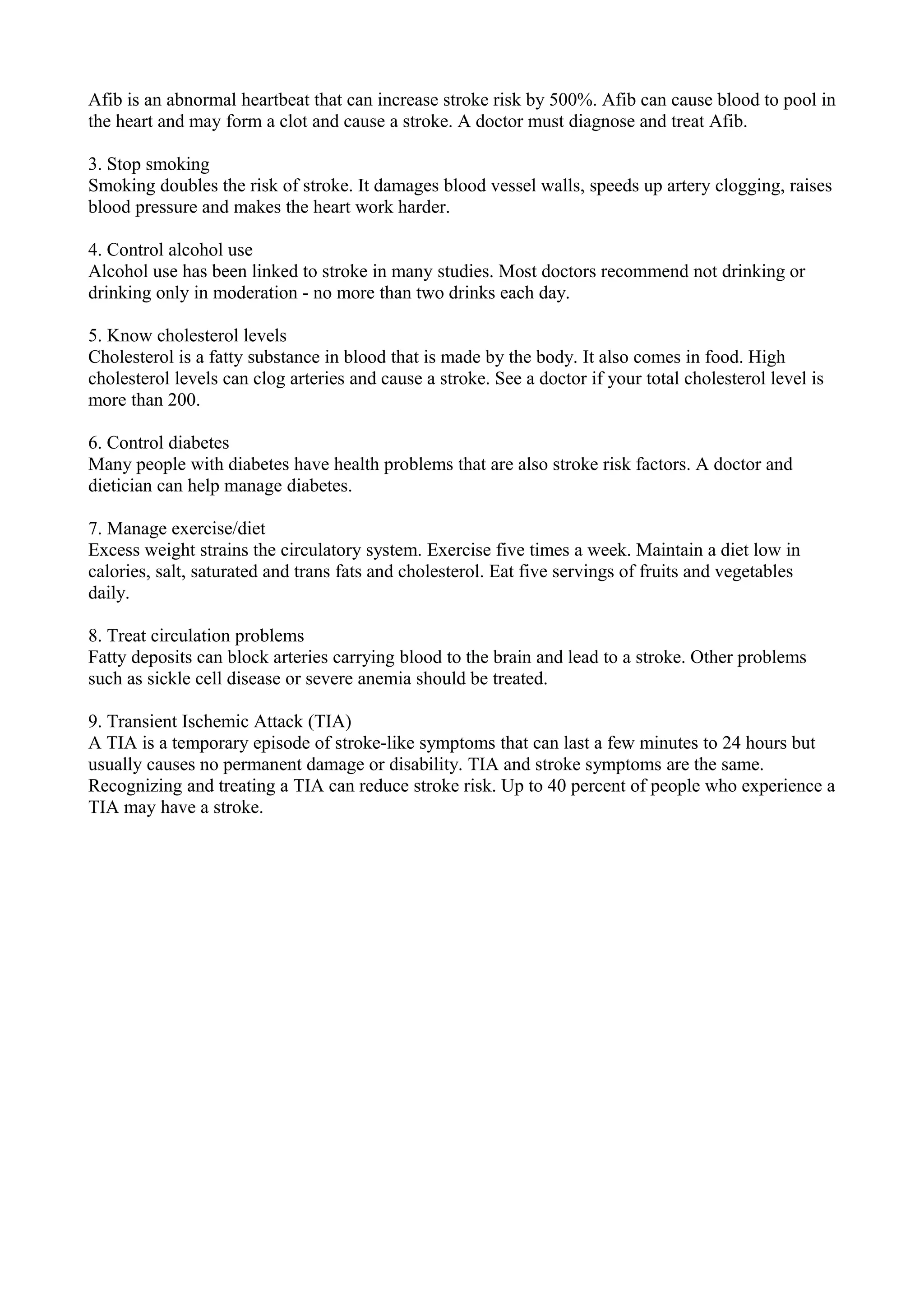A stroke occurs when blood flow to the brain is interrupted, depriving brain cells of oxygen. There are two main types of stroke: ischemic, caused by a blood clot blocking an artery, and hemorrhagic, caused by a ruptured blood vessel in the brain. Symptoms appear suddenly and may include paralysis, speech problems, and vision issues. Strokes are medical emergencies that require immediate diagnosis through scans and tests to identify the type and appropriate treatment, which may include clot-busting drugs or surgery. Rehabilitation is often needed and focuses on regaining abilities through therapies. Prevention emphasizes controlling risk factors like high blood pressure, diabetes, smoking, and high cholesterol through healthy lifestyle choices and medical management


